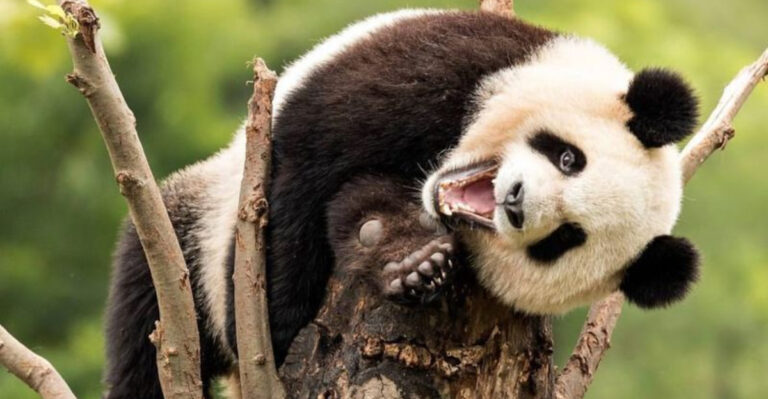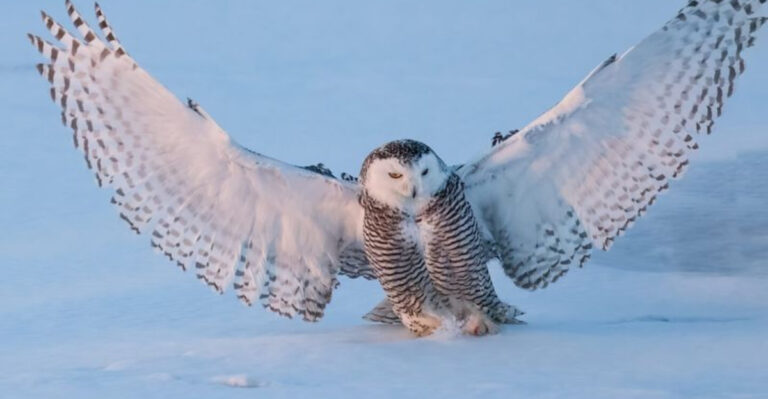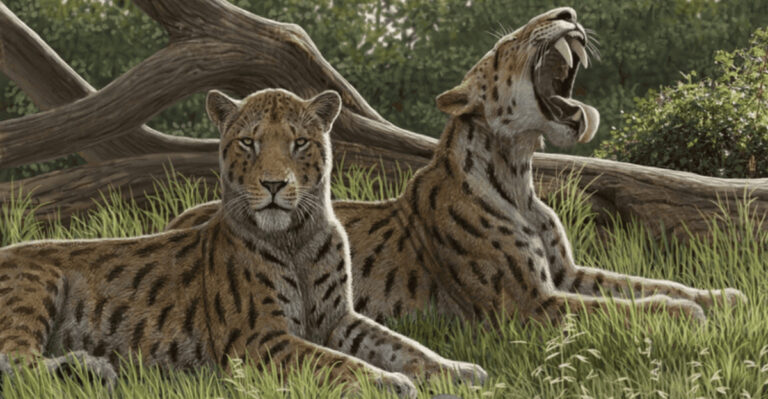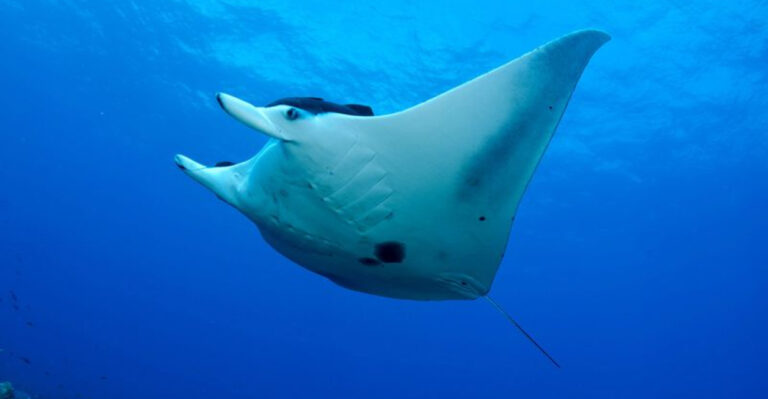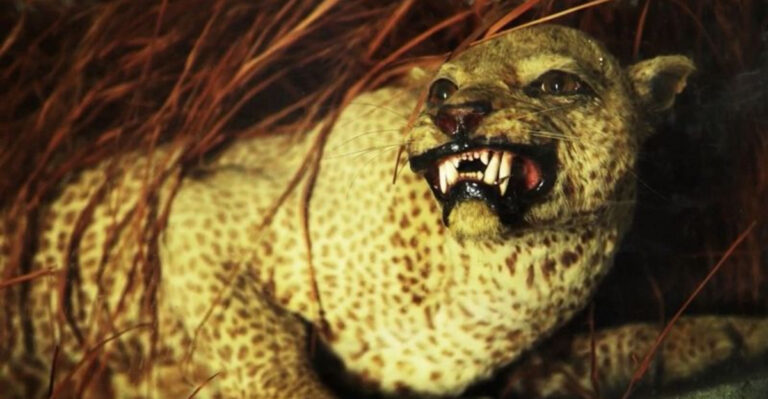The 19 Biggest Spiders Still Crawling The Earth Today
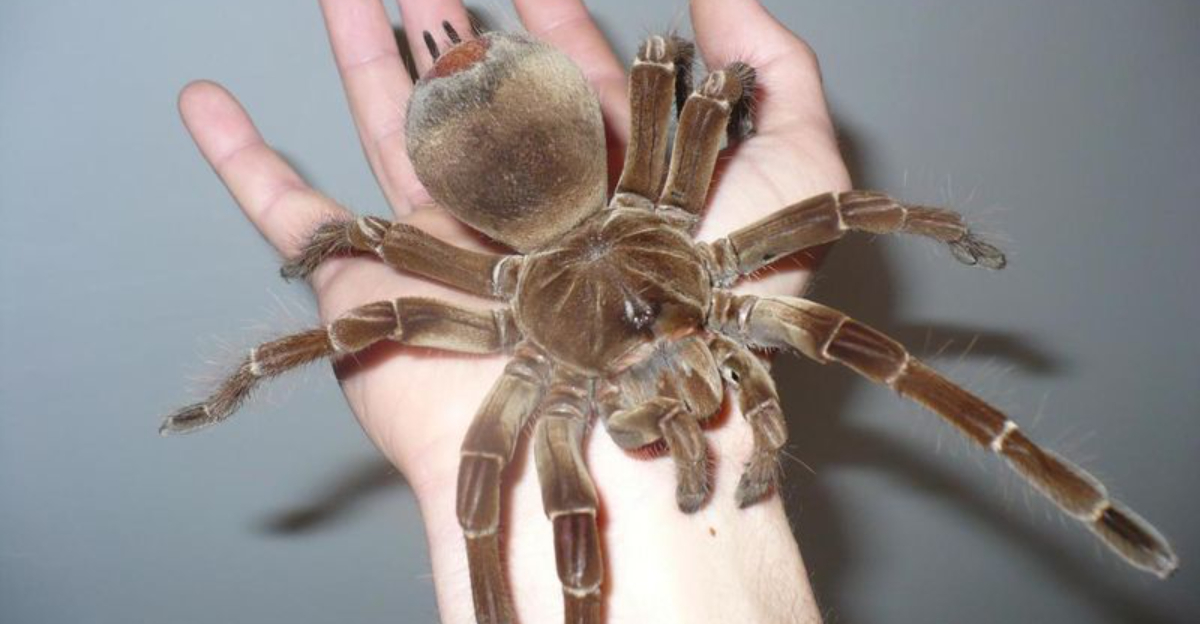
Prepare to be both amazed and slightly startled as we embark on a journey across the world to uncover the giants of the arachnid order. These spiders, with their immense sizes and fascinating behaviors, have captured the imaginations of scientists and enthusiasts alike. Read on if you dare, as we introduce you to the Goliaths that still roam our planet today.
1. Goliath Birdeater
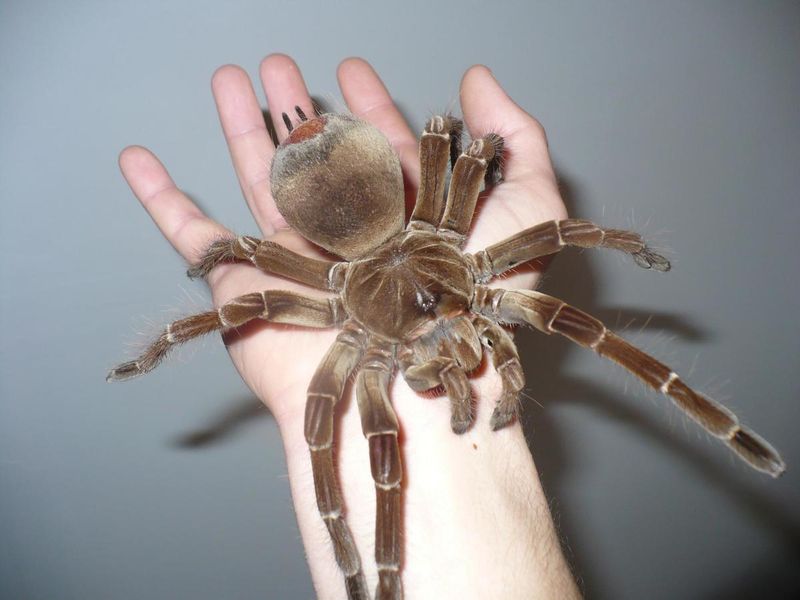
The Goliath Birdeater is the heavyweight champion of the spider world, residing in the dense, humid rainforests of the Amazon. Weighing as much as a puppy, these hairy giants boast a leg span of up to 12 inches. Imagine a dinner plate with the ability to crawl!
Despite its fearsome name, this spider does not typically eat birds. Instead, its diet consists mainly of insects and small mammals. Its fangs, capable of piercing human skin, inject venom that liquefies prey’s insides. Though not lethal to humans, the bite can be painful.
These nocturnal hunters are masters of stealth. Lurking in the shadows, they ambush their prey with remarkable speed. Their presence in the ecosystem is critical, controlling pest populations. However, as impressive as they are, encountering one in the wild is not for the faint-hearted.
2. Huntsman Spider
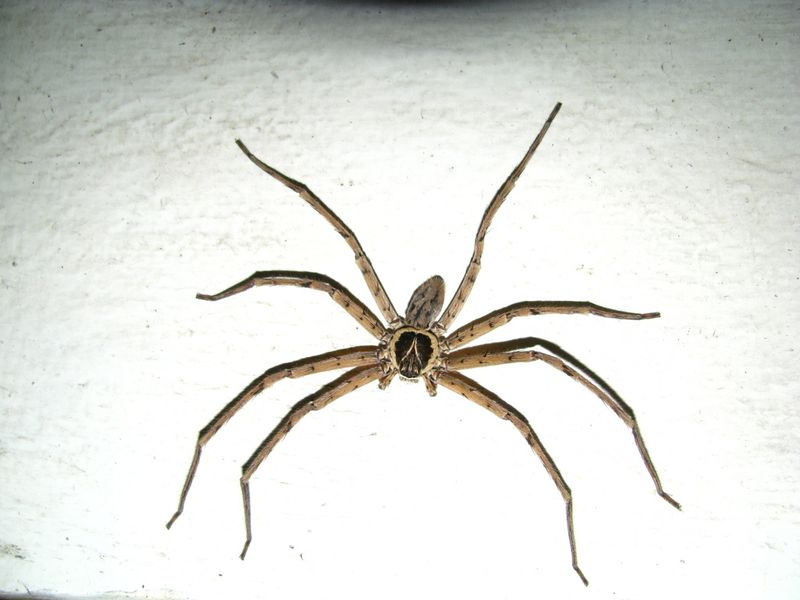
The Huntsman Spider, known for its speed rather than its web, is a marvel of nature’s design. With a leg span reaching up to 12 inches, this agile predator is more likely to run you down than trap you in silk.
Native to Australia, these spiders are often mistaken for tarantulas, although they belong to a different family. They’re commonly found in homes, much to the dismay of residents. Their appearance is intimidating, but they are relatively harmless to humans.
They feed on insects and other small creatures, providing natural pest control. Their flattened bodies allow them to squeeze into narrow spaces, making them elusive guests. With an astonishing speed and penchant for surprise, the Huntsman earns its name. Yet, despite their reputation, they are essential players in the balance of ecosystems, keeping nuisances in check.
3. Brazilian Wandering Spider
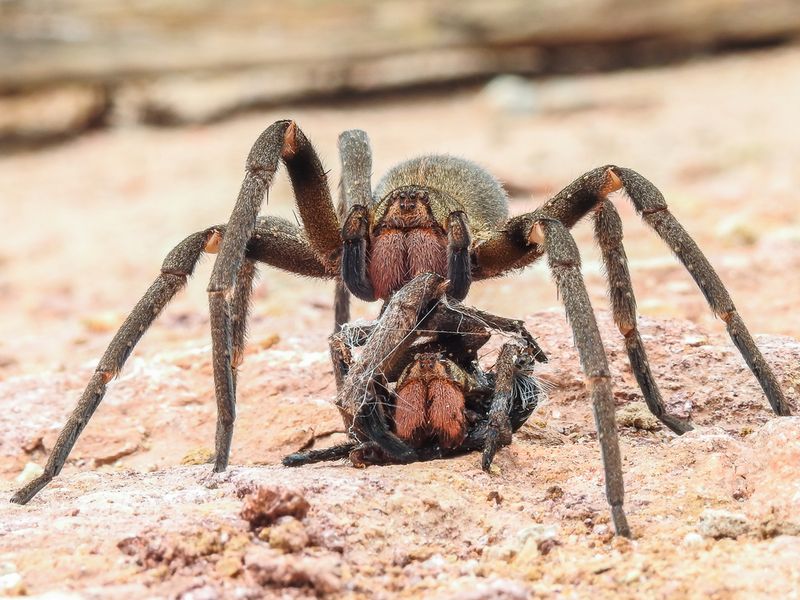
The Brazilian Wandering Spider is a creature that commands respect and caution. Known for its potent venom, it’s considered one of the most dangerous spiders in the world. With a leg span of up to 5-7 inches, it’s not the sheer size but the threat it poses that makes it terrifying.
These spiders don’t spin webs to catch prey. Instead, they roam the forest floors at night, hunting actively. Their aggressive nature is matched by their formidable appearance, often seen with legs raised in a defensive pose.
Native to South American jungles, their bites can be medically significant, leading to intense discomfort. However, they play a significant ecological role, controlling insect populations. Despite their fearsome reputation, their contribution to biodiversity is crucial, reminding us of the delicate balance within our ecosystems.
4. Camel Spider
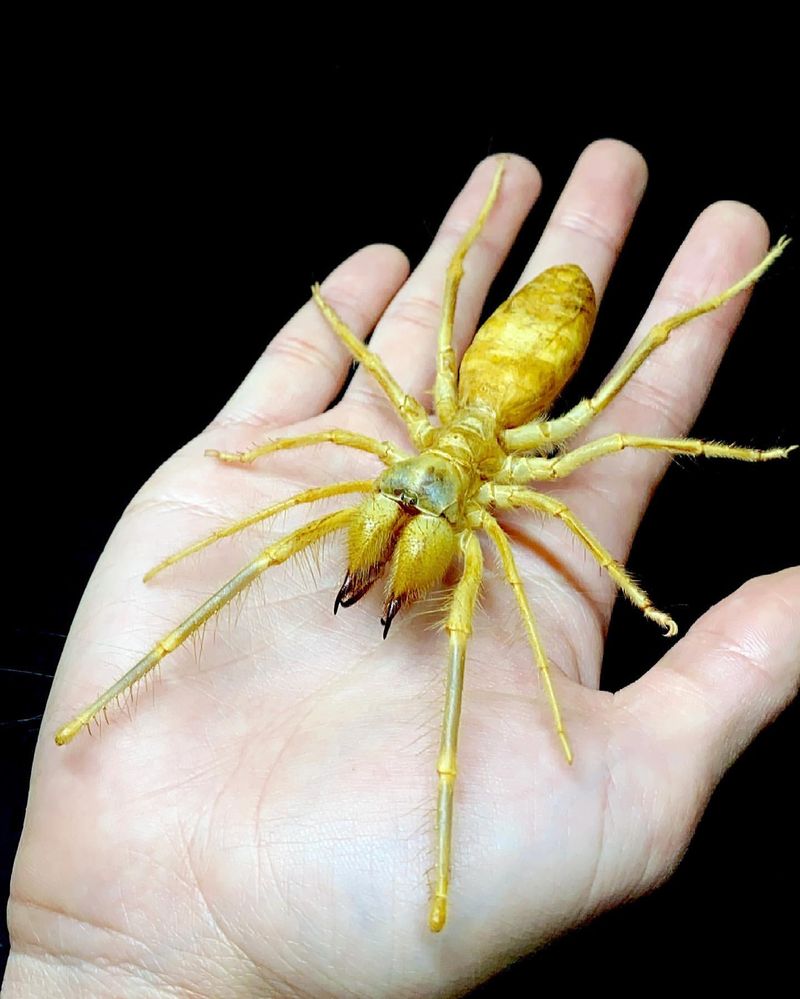
Despite its name, the Camel Spider is neither a true spider nor a camel enthusiast. These arachnids, known as solifuges, have inspired myths with their otherworldly appearance and behavior.
Found in desert regions, they can grow to a formidable 6 inches in length, with jaws that look like they belong in a sci-fi movie. They are fast, capable of running up to 10 miles per hour, chasing down prey with fervor.
Their diet includes insects, small rodents, and even lizards. Though they have a fearsome reputation, Camel Spiders are not venomous to humans. Their presence is a testament to adaptation, surviving in some of the harshest climates on Earth. While they might give you a fright, they are incredible examples of nature’s resilience and ingenuity. Encountering one is an unforgettable experience.
5. Giant Huntsman Spider
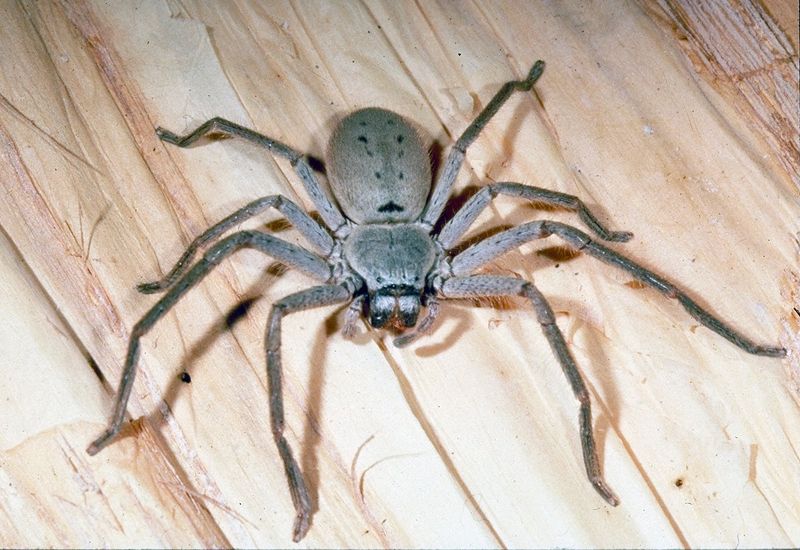
The Giant Huntsman Spider holds the record for the largest leg span of any spider, reaching an astonishing 12 inches. Found in the warm caves of Laos, this arachnid is a spectacle of nature’s grandeur.
Unlike most spiders, it uses its long legs to ambush prey rather than spin webs. Its speed is unparalleled, making it a formidable hunter of the night. With an appearance that could send shivers down the spine, they are actually harmless to humans.
Their existence in the ecosystem is vital, as they control insect populations. The Giant Huntsman is an elusive creature, often hiding in dark, secluded places, away from human eyes. Encountering one is a rare occurrence, a reminder of the vast diversity and mystery the natural world holds. Their role is indispensable, balancing the delicate threads of life.
6. Golden Silk Orb-Weaver
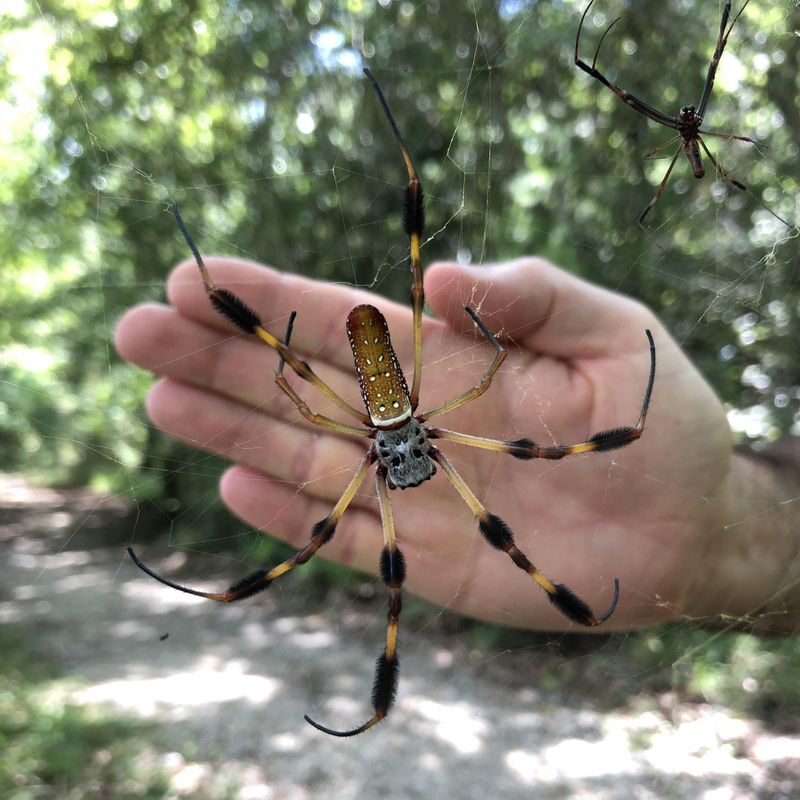
Step into a world of golden silk with the Golden Silk Orb-Weaver, a spinner of dreams and nightmares alike. These arachnids create some of the strongest and most beautiful webs known to man, shining like spun gold in the sunlight.
With bodies measuring up to 3 inches and leg spans reaching 5-6 inches, they create vast webs that can span several feet. Their golden hue isn’t just for show; it camouflages them against predators and attracts prey.
These spiders dwell in tropical regions, from rainforests to urban gardens. They play a significant ecological role, capturing a wide range of insects. The Golden Silk Orb-Weaver is a weaver of wonder, an architect of nature’s finest traps, and a crucial player in the web of life. Though their webs might ensnare the unwary, they are a testament to nature’s artistry and the interconnectedness of ecosystems.
7. Chilean Rose Tarantula
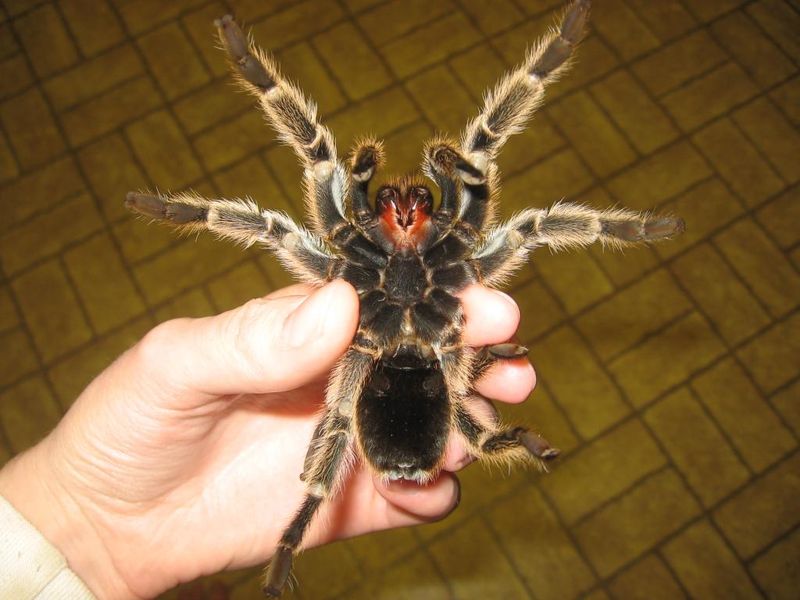
The Chilean Rose Tarantula is a true marvel, adored by enthusiasts for its gentle demeanor and striking appearance. Dwelling in the arid landscapes of Chile, these spiders are enveloped in intriguing rose-colored hairs that shimmer under the sun.
Growing up to 5 inches, its presence is a captivating sight. Unlike many of its cousins, the Chilean Rose is known for its docile nature, making it a popular pet among arachnid lovers. These tarantulas are more than just eye-catching; they play a vital role in the ecosystem by controlling insect populations.
Their diet consists primarily of insects and small vertebrates, and their calm nature makes them fascinating subjects of study. The Chilean Rose Tarantula is an ambassador of the arachnid world, bridging the gap between fear and fascination, and reminding us of the beauty in the unexpected. They are gentle giants of the spider realm.
8. Sydney Funnel-web Spider
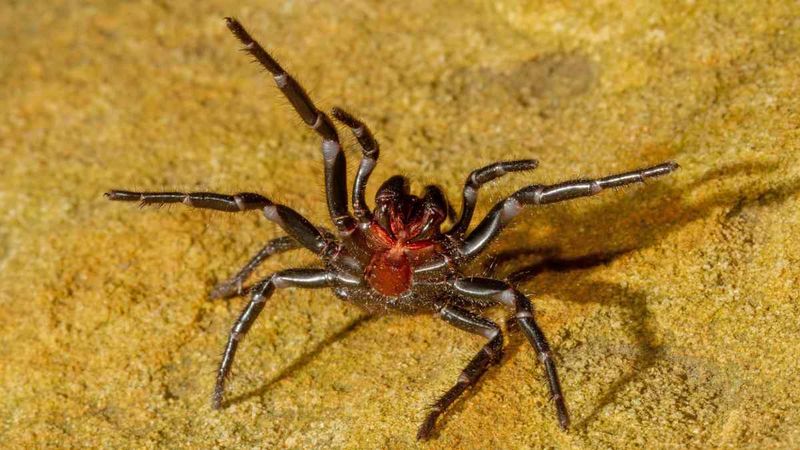
The Sydney Funnel-web Spider is a creature of legend, infamous for its potent venom and aggressive nature. Found in the forests and gardens of Eastern Australia, this spider commands both respect and caution.
With a body length of up to 2 inches, its glossy black exterior and prominent fangs make it an intimidating sight. Known for the distinctive funnel-shaped webs it weaves, this spider waits with patience and precision for unsuspecting prey.
Its venomous bite can be dangerous to humans, making it one of the most feared spiders. However, antivenom is available, turning potential peril into a fascinating encounter with one of nature’s most remarkable predators. The Sydney Funnel-web Spider is a master of survival, a testament to the complexity and danger lurking in the natural world. Their presence is a stark reminder of the power and beauty entwined in nature’s web.
9. Redback Spider
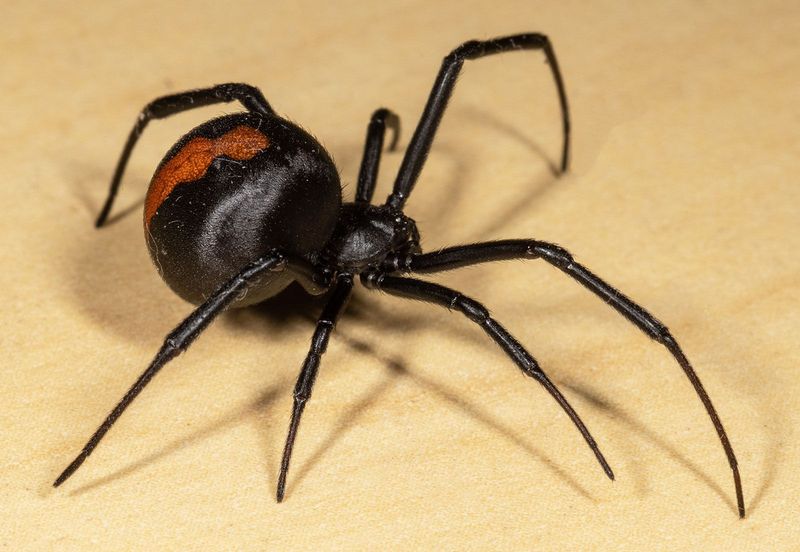
The Redback Spider, notorious for its vivid red stripe and potent venom, is an iconic Australian inhabitant. This small but fearsome spider has a reputation that belies its size.
Measuring just 1 centimeter in body length, the Redback’s striking appearance is enough to cause a pause. They thrive in urban areas, often found in gardens and sheds, weaving tangled webs that trap unsuspecting insects.
The venom of the Redback is medically significant, capable of causing severe pain and discomfort. However, bites are rarely fatal, thanks to effective antivenom. Despite its fearsome reputation, the Redback plays a vital role in controlling insect populations, proving that even the smallest creatures can have a significant impact. The Redback Spider is a testament to survival in the urban jungle, a symbol of both fear and fascination in the arachnid world.
10. Tarantula Wolf Spider
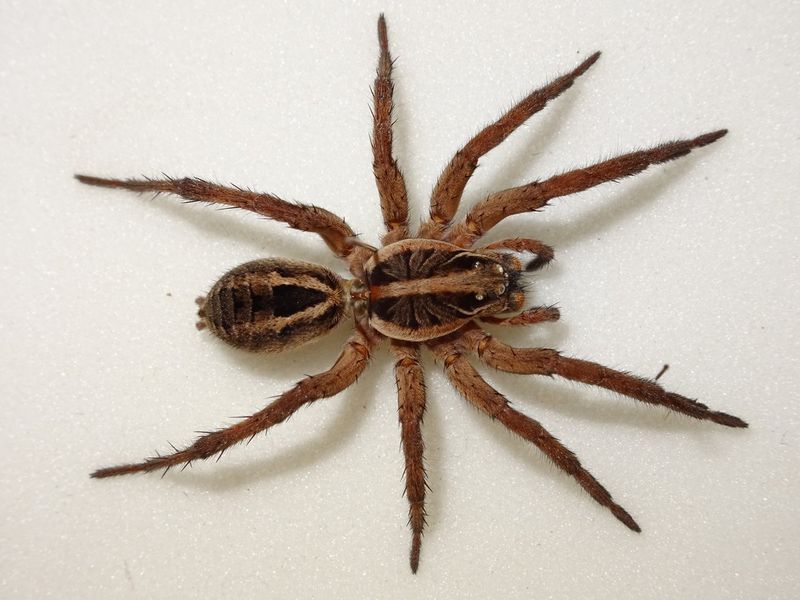
The Tarantula Wolf Spider is a powerhouse of the arachnid family, blending the traits of tarantulas and wolf spiders into one formidable package. With a leg span that can reach up to 10 inches, it’s a sight to behold on the forest floor.
These spiders are active hunters, forgoing webs in favor of stalking and ambushing their prey. Their keen eyesight and speed make them effective predators, able to take down a variety of insects and even small vertebrates.
Native to the Americas, the Tarantula Wolf Spider is an essential player in maintaining ecological balance. While their appearance can be daunting, these spiders pose little threat to humans. Their presence is a reminder of the diverse and hidden lives that thrive in our natural world, embodying the strength and adaptability that define the spider kingdom.
11. Baboon Spider
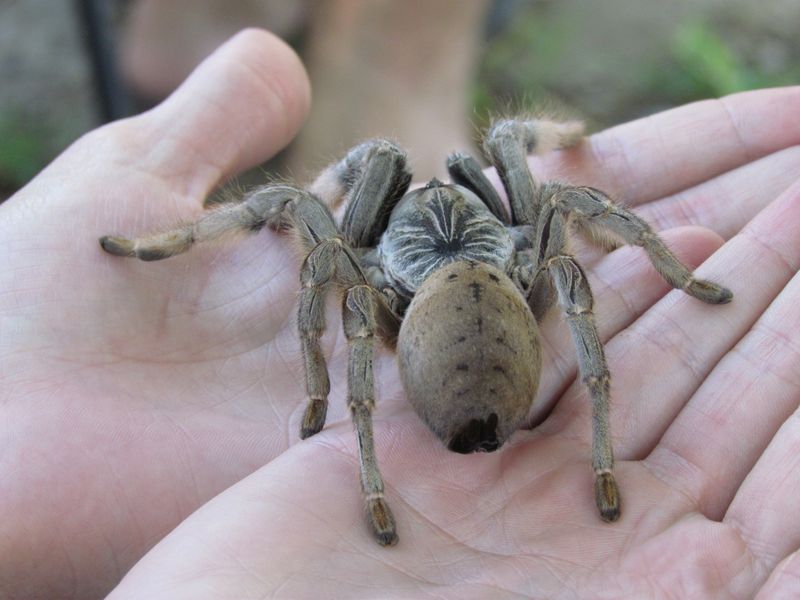
The Baboon Spider, a name that evokes both intrigue and an ounce of fear, is a burrowing marvel of the African continent. Known for its substantial size, with legs reaching up to 6 inches, this spider is a master of the underground.
These tarantulas dig extensive burrows, creating labyrinths that serve as both home and hunting grounds. The Baboon Spider’s diet consists of insects and small vertebrates, and its hunting strategy involves stealth and patience.
While their appearance might be intimidating, these spiders are not aggressive towards humans. They are a crucial part of the ecosystem, controlling pest populations and enriching the soil. The Baboon Spider is a testament to the diversity and complexity of life, a reminder of the wonders that lie beneath our feet, waiting to be discovered and appreciated.
12. Giant Tarantula
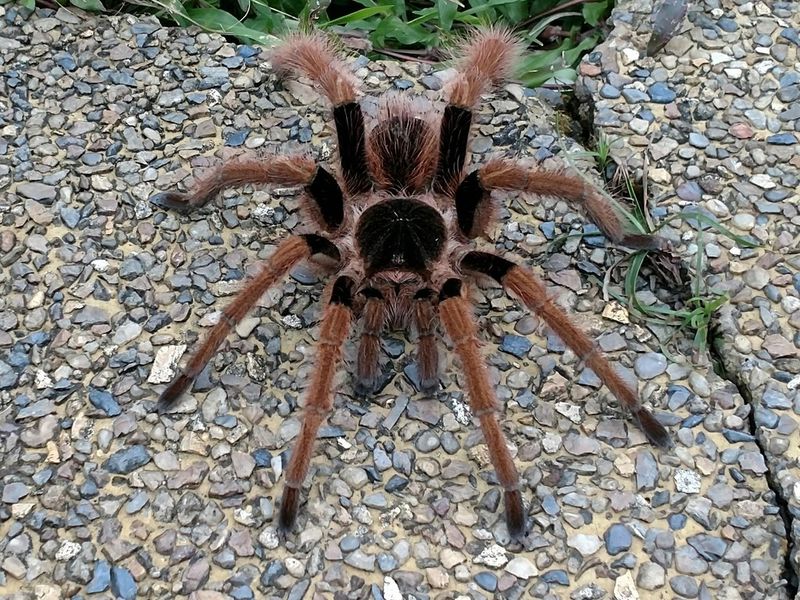
The Giant Tarantula, reigning supreme in the jungles of South America, is a spectacle of size and color. With its body measuring up to 4 inches and a leg span reaching 10 inches, it’s a commanding presence among the foliage.
These spiders are masters of ambush, using their size and strength to overpower prey. Their diet includes insects, small mammals, and sometimes even birds. Despite their intimidating size, they are generally docile and pose little threat to humans.
Their vibrant coloration and hairy bodies make them a favorite subject for wildlife photographers and arachnid enthusiasts. The Giant Tarantula is a symbol of the power and beauty of nature, a reminder of the intricate web of life that connects us all. Their role in maintaining ecological balance is as vast as their size, a testament to nature’s grandeur.
13. Mouse Spider
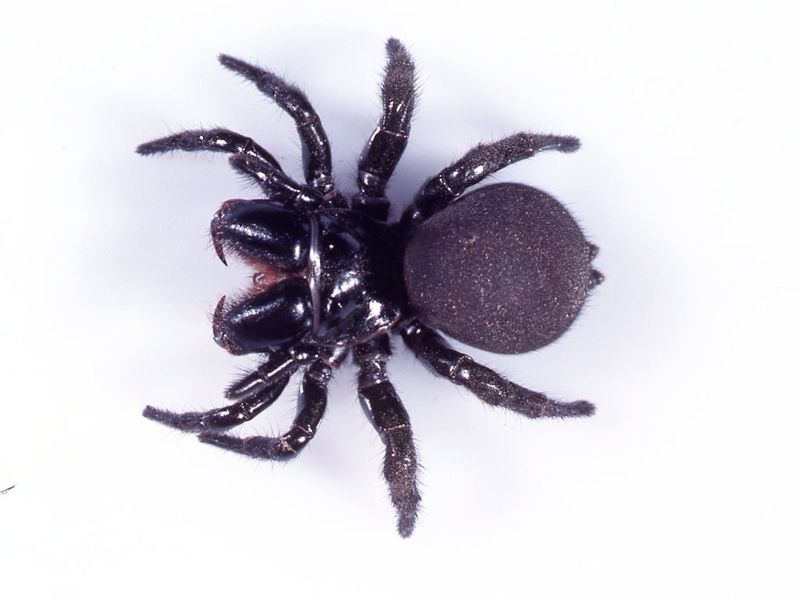
The Mouse Spider, small yet fierce, is an Australian native that packs a punch disproportionate to its size. Measuring just over an inch, its deceptive appearance hides potent venom that commands respect.
These spiders are often mistaken for their more dangerous relatives, but they are less aggressive and bites are rare. Found in burrows, the Mouse Spider is a patient hunter, waiting for prey to wander by.
Their striking red markings and stocky bodies make them instantly recognizable. They play a crucial role in controlling insect populations, proving that size isn’t everything in the wild. The Mouse Spider embodies the spirit of the bush, resilient and unyielding, a small but significant guardian of the ecosystem. Encountering one is a glimpse into the hidden dramas of the natural world, an experience that leaves one both awed and appreciative.
14. Giant House Spider
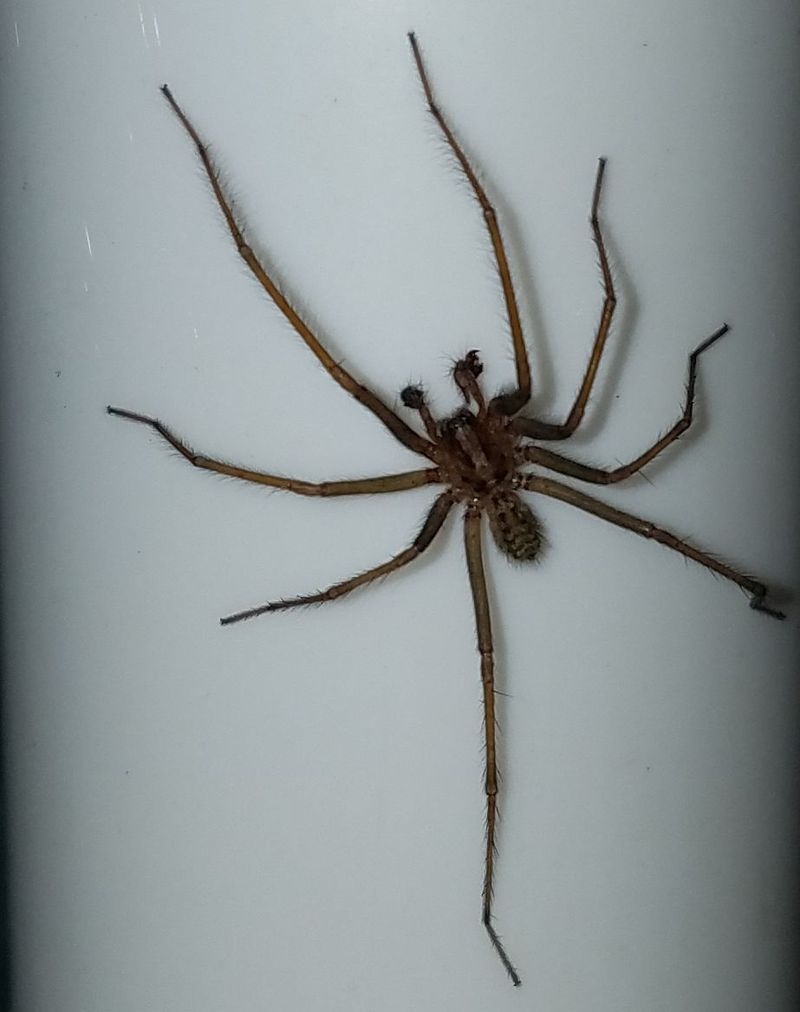
The Giant House Spider is a familiar yet formidable presence in European homes. With a leg span reaching up to 4 inches, it’s often an uninvited but fascinating guest.
These spiders are known for their speed and agility, capable of darting across walls and floors with ease. They are harmless to humans, preferring to hunt insects, which makes them valuable allies in pest control.
Their presence in homes often sparks surprise, yet they are shy and tend to avoid human interaction. The Giant House Spider is an urban explorer, adapting to the hustle and bustle of human life while maintaining its secretive nature. Their ability to coexist with us is a testament to nature’s resilience and adaptability, a silent partner in the fight against household pests.
15. Wolf Spider
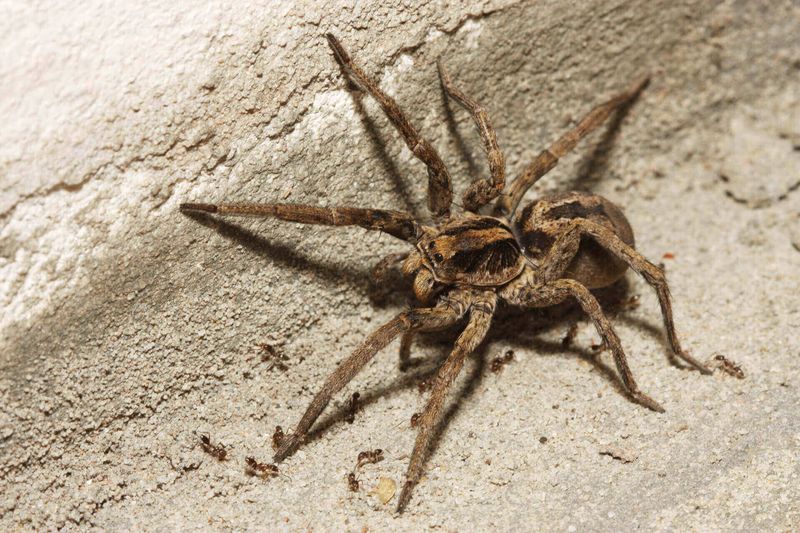
The Wolf Spider, a master of camouflage and stealth, prowls the forest floors of North America. Known for their robust bodies and keen eyesight, these spiders are formidable hunters.
With a leg span of up to 4 inches, they use their camouflage to blend seamlessly into their surroundings. Unlike web-spinning spiders, Wolf Spiders actively chase and pounce on their prey, showcasing their agility and speed.
Their diet consists of insects and other small creatures, playing a crucial role in maintaining ecological balance. While their appearance may cause alarm, they are harmless to humans and prefer to avoid confrontation. The Wolf Spider is a testament to the art of survival, embodying the fierce determination and adaptability that define the arachnid realm. Their presence is a reminder of the hidden battles that shape our natural world.
16. Trapdoor Spider
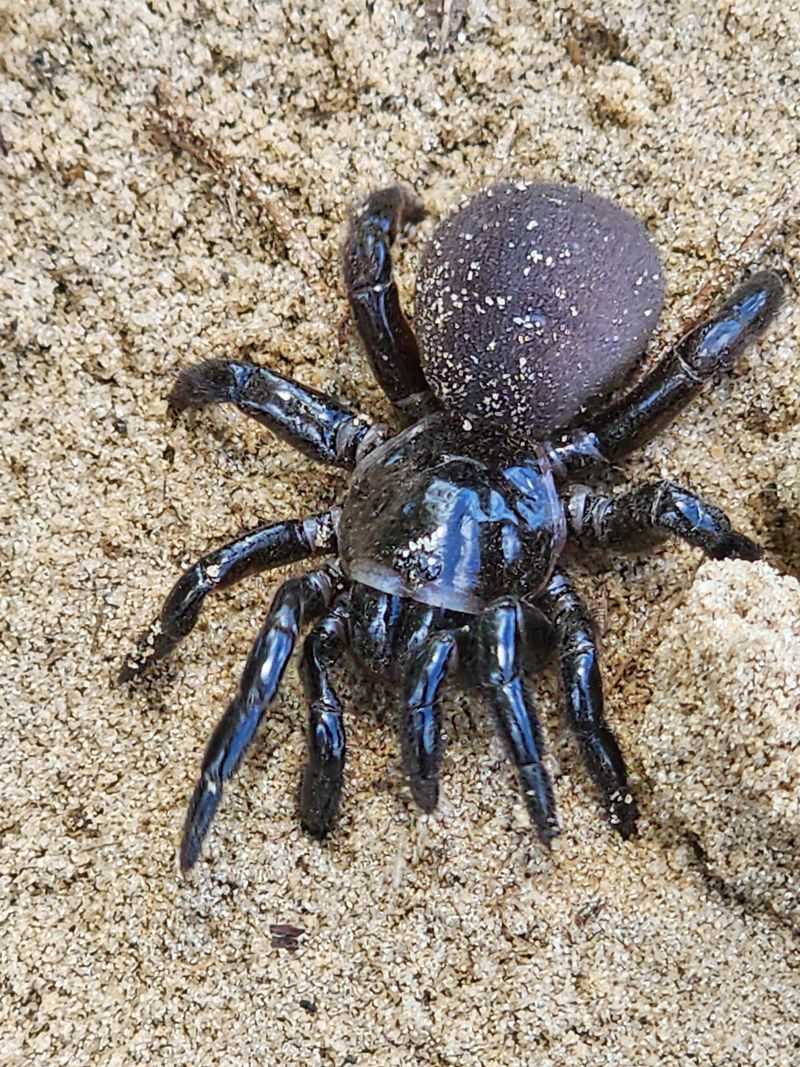
The Trapdoor Spider, an architect of the underground, is a fascinating inhabitant of Australia’s forests. Known for their ingenious burrows, these spiders are masters of surprise and stealth.
With a body length of up to 1.5 inches, they construct camouflaged burrows with silk-lined doors, waiting patiently for unsuspecting prey to pass by. Their powerful legs and jaws make them effective ambush predators.
These spiders play a vital role in controlling insect populations, showcasing the complexity of ecological interactions. The Trapdoor Spider is a hidden wonder, a testament to the ingenuity and patience that nature inspires. Their presence is a reminder of the intricate webs of life beneath our feet, unseen yet profoundly impactful. Encountering one is a rare glimpse into the secretive and sophisticated world of arachnid architecture.
17. Indian Ornamental Tarantula
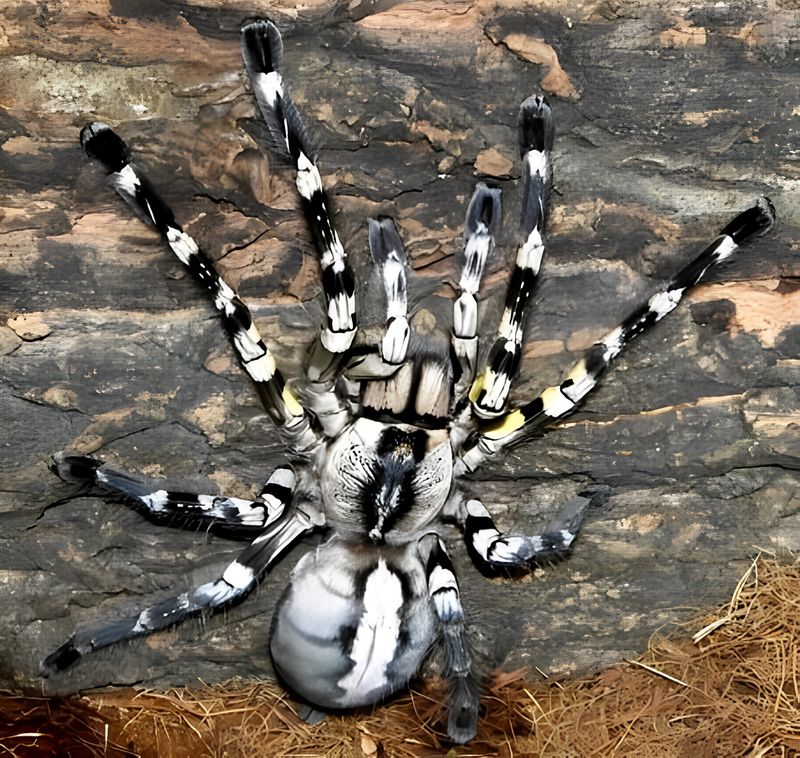
The Indian Ornamental Tarantula, a vibrant jewel of the spider world, is renowned for its striking appearance and impressive size. Found in the forests of India, this tarantula is a sight to behold.
With a leg span reaching up to 7 inches, its vivid patterns and colors are both awe-inspiring and intimidating. These arboreal creatures prefer the heights of trees, where they weave intricate webs.
Their diet consists of insects and small vertebrates, playing a critical role in the ecosystem as both predator and prey. While their appearance might cause fear, they are generally shy and avoid human contact. The Indian Ornamental Tarantula is a symbol of the exotic and mysterious, a reminder of the diversity and beauty found in the natural world. Their presence is a testament to the complexity and wonder that life offers.
18. Barking Spider
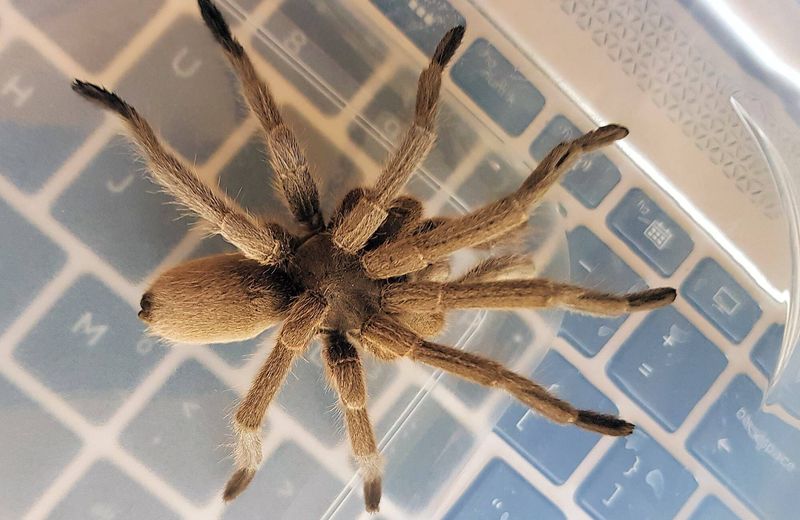
The Barking Spider, known for the peculiar noise it makes, is an inhabitant of the Australian outback that delights and intrigues. With a leg span reaching up to 8 inches, these tarantulas are both formidable and fascinating.
Their name comes from the sound they produce, a hissing noise made by rubbing their legs together. This serves as a defense mechanism, warning off potential predators.
Burrowing deep into the ground, they create homes that protect them from the harsh climate. Their diet includes insects and small vertebrates, making them key players in the ecosystem. The Barking Spider is a marvel of adaptation, showcasing the unusual wonders that evolution can produce. Their presence is a reminder of the unexpected and extraordinary that nature holds, waiting to be discovered and celebrated.
19. Cupiennius Salei
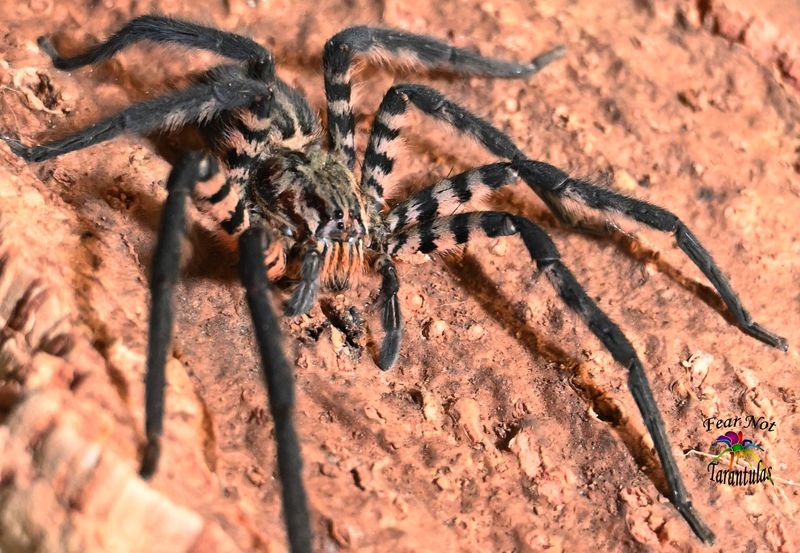
Cupiennius Salei, a member of the wandering spider family, is an agile predator that roams the rainforests of Central America. Known for its slender body and impressive leg span of up to 5 inches, it is a swift and effective hunter.
These spiders do not build webs. Instead, they rely on their speed and agility to capture prey, feeding on insects and small vertebrates. Their vibrant coloration and patterns make them a captivating subject for observation.
While they may appear intimidating, Cupiennius Salei poses no significant threat to humans, preferring to flee rather than fight. They play a crucial role in the ecosystem, maintaining insect populations and contributing to the biodiversity of the rainforest. This spider is a testament to the beauty and complexity of life in the tropics, a reminder of the intricate connections that sustain our natural world.

